Inflatable Space Stations
NASA is considering the use of inflatable modules for the International Space Station (ISS). This idea has been proposed as early as in the 1960s, but it has never been put to use in space until Bigelow Aerospace took over the idea and developed two working prototypes and tested them in space. The main advantage of inflatable space stations is the fact that they are much lighter and take up less space at launch, which greatly cuts the costs of the whole endeavor.
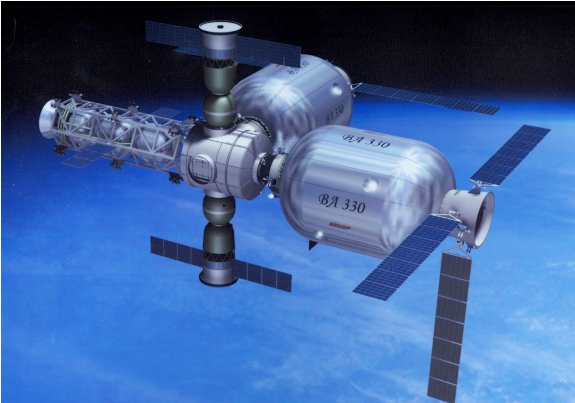
Artist impression of an inflatable space station with two Soyuz-class Russian capsules docked.
Image Credits: Bigelow Aerospace.
History of the concept of inflatable space stations:
In 1961 the tire manufacturer Goodyear was commissioned by NASA to develop prototypes of an inflatable space station. They looked like giant tires (an advertising attempt for their tire industry?) and could in theory house two astronauts. However, the project was never completed.
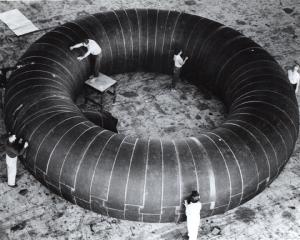 The Goodyear inflatable space station prototype.
The Goodyear inflatable space station prototype.
Image Credits: NASA.
Later on in the 1990s, when the first parts of ISS were being built, an inflatable module called the TransHab was being developed as the main crew quarters on the station. Again, the project was scrapped due to budget constraints.
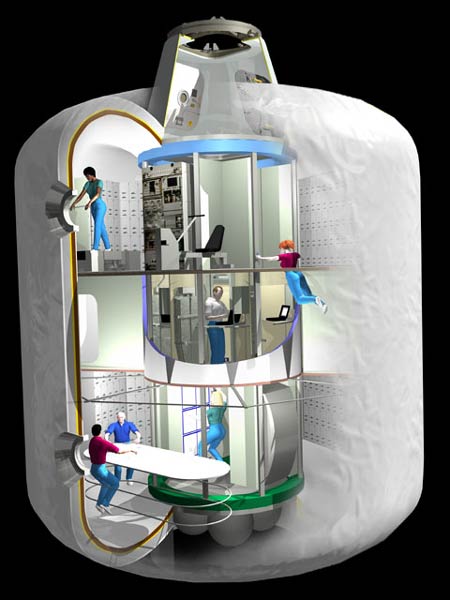 A cross section view of the TransHab module.
A cross section view of the TransHab module.
Image Credits: NASA.
A private company called Bigelow Aerospace then bought the patents to this technology from NASA and has since been developing and testing prototypes in space. The two small, three meters long prototypes called Genesis I and II have been launched to space using decommissioned Russian missiles and have been successfully inflated in low Earth orbit in 2006 and 2007 respectively. A new 180-cubic-meter prototype called Sundancer is now being built and a larger 330-cubic-meter version is being planned.
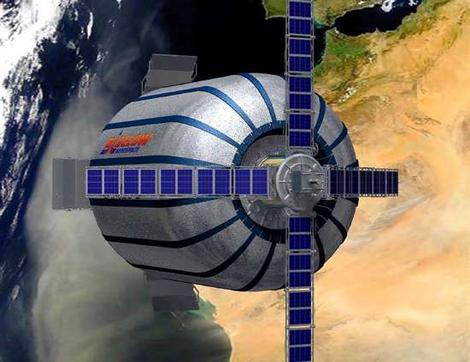 An artist impression of Genesis I in low Earth orbit.
An artist impression of Genesis I in low Earth orbit.
Image Credits: Bigelow Aerospace.
How does this technology work?
Each Bigelow module is made of flexible, airtight fabric that expands when tanks release a breathable oxygen and nitrogen mixture inside. The fabric consists of multiple layers of Vectran, a double-strength variant of Kevlar, the material used in bulletproof vests. All this is coated with a conventional metallic foil that shields the module from micro meteorites and orbital debris.
According to Bigelow, in their simulations micrometeorites would completely puncture the metallic modules of the ISS, while the same micrometeorites would bounce off their inflatable module. A slightly stronger impact would only penetrate half-way through the Vectran fabric, while causing a disaster to the ISS. Moreover when a breach occurs in a metallic module, cracks appear in the structure, while an inflatable module would only have a hole the size of the micrometeoroid. In case of such a breach in a Bigelow module the astronauts inside would have up to 24 hours to find and seal it. All this means that the Bigelow module is much safer than the current ISS metallic modules, and that the popping balloon analogy is totally incorrect.
Current NASA plans:
NASA is considering docking a Bigelow module to the ISS for further testing. There are also plans of ordering a few such modules for the station. In the future, similar modules could be used for a Moon Base. However, with NASA’s new budget, it is still unknown if those plans will ever be fulfilled.
 Artist rendering of an inflatable Moon Base.
Artist rendering of an inflatable Moon Base.
Image Credits: Bigelow Aerospace.
Would you like to receive similar articles by email?




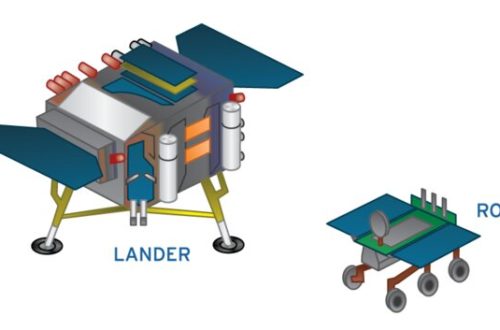
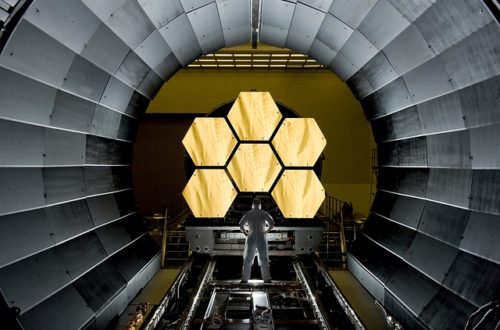
5 Comments
Moczulski
I truly enjoy reading on this site, it has fantastic content. “Don’t put too fine a point to your wit for fear it should get blunted.” by Miguel de Cervantes.
unknowngou
Wow! what a concept What an idea Gorgeous Wonderful …
ElecTronic Drums
ohh…great publish but actually?/? 😛
Mulnix
I checked whole internet to something about to this area…. Best regards
Benjamin Koshkin
It seems like someone at NASA dropped the ball.
Benjamin Koshkin